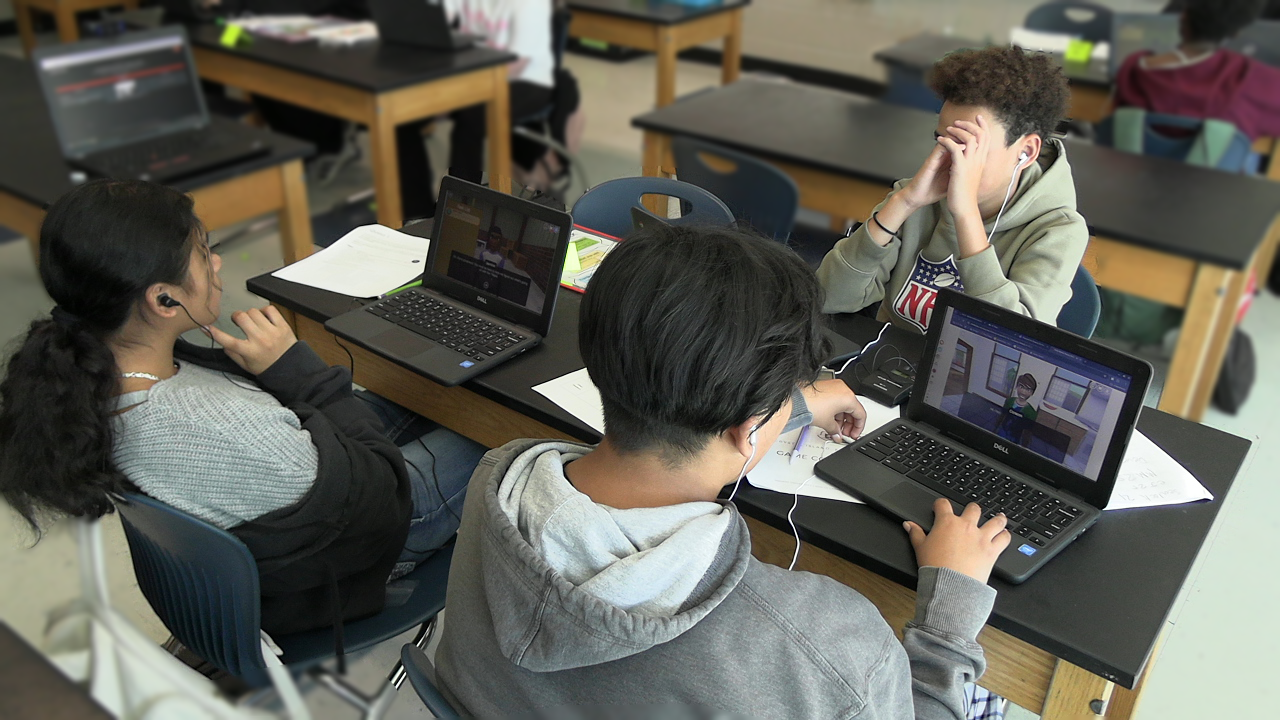Middle school educators know that keeping students engaged is no small feat. The transition from elementary to middle school brings many changes for students, including increased academic demands, social pressures and a need for greater independence. Amidst these changes, many students struggle to stay motivated and engaged with their schoolwork.
I am fortunate this year to be partnering with a local middle school that is implementing Project-Based Inquiry (PBI), an inquiry-to-action process developed by Dr. Hiller Spires and evolving through the work of Marie Himes and the New Literacies Collaborative. PBI offers a dynamic and interactive way to boost student engagement. It involves students in sustained, in-depth investigations of complex questions, problems or challenges. This method emphasizes student autonomy, collaborative learning and real-world relevance.
As many schools face the ongoing challenge of engaging students and securing their buy-in for academic activities, PBI stands out as a promising approach. However, successful integration of PBI—or any student-centered instructional method—requires thoughtful consideration of students’ developmental stages.
Recent research supports the effectiveness of PBI in engaging students and improving learning outcomes. According to researchers Brigid Barron and Linda Darling-Hammond, collaborative inquiry-based learning, like PBI, can enhance student motivation, critical thinking and problem-solving skills. Furthermore, a study by Jo Boaler found that inquiry-based instructional approaches, including PBI, not only engage students but also help them develop a deeper understanding of the material and retain knowledge more effectively.
The Tension
Cognitive Development: Middle school students are transitioning from concrete to more abstract thinking. According to Swiss psychologist Jean Piaget, they are moving into the formal operational stage, where they can handle abstract concepts but still benefit from concrete experiences. PBI, which often involves complex, open-ended problems, requires students to plan, organize and execute projects independently. For some, this leap can be overwhelming without proper support and scaffolding.
Social-Emotional Development: Psychoanalyst Erik Erikson identifies the middle school years as a critical time for developing a sense of industry versus inferiority. Students are eager to demonstrate their capabilities and gain approval from peers and adults. However, the self-directed nature of PBI can sometimes lead to feelings of insecurity or frustration, especially if students struggle with the autonomy PBI demands.
Balancing Structure and Independence: While PBI encourages independence and self-direction, middle school students often still need structure and guidance. Too much independence too soon can lead to confusion and disengagement. Conversely, too much structure can stifle creativity and the development of critical problem-solving skills.
The Opportunities
Promoting Independence: PBI provides an ideal framework for fostering independence. By gradually increasing the complexity and autonomy of projects, teachers can help students develop the skills they need to work independently. This scaffolded approach ensures students build confidence and competence as they progress.
Developing Critical Thinking Skills: The open-ended nature of PBI encourages students to think critically and creatively. They learn to ask questions, conduct research, analyze information and develop solutions—skills that are essential for success in the 21st century. This process helps them transition from concrete to more abstract thinking, bridging the cognitive developmental gap.
Enhancing Engagement and Motivation: When students are given the opportunity to explore topics of personal interest through PBI, their engagement and motivation soar. The real-world relevance of PBI projects makes learning meaningful, helping students see the value in their education and fostering a lifelong love of learning.
Building Collaboration Skills: PBI often involves collaborative work, teaching students how to communicate, negotiate and work effectively in teams. These social skills are crucial during the middle school years, helping students build strong relationships and a sense of community.
Meeting Diverse Learning Needs: PBI allows for differentiation, enabling teachers to tailor projects to meet the diverse learning needs of their students. By offering various entry points and levels of complexity, teachers can ensure that all students are challenged and supported appropriately.
Strategies for Success
To successfully implement PBI at the middle school level, teachers must consider several key strategies that cater to students’ developmental needs:
First, scaffolding is essential. Providing the necessary support and gradually releasing responsibility helps students build confidence. Teachers can start with highly structured projects and slowly introduce more autonomy as students demonstrate readiness. This approach ensures that students are not overwhelmed and can develop their skills progressively.
Clear expectations are also crucial. Establishing guidelines and checkpoints keeps students on track. Regular feedback and check-ins can prevent feeling overwhelmed and ensure steady progress. This clarity helps students understand what is expected of them and how they can succeed.
Connecting projects to real-world issues and students’ interests makes learning relevant and engaging. When students see the value in their work, their motivation increases. Designing projects that resonate with students’ lives and future aspirations can significantly enhance their investment in learning.
Incorporating reflective practices is another powerful strategy. Encouraging students to reflect on their learning processes and outcomes helps them internalize their experiences and understand their growth areas. Reflection enables students to make sense of their learning journey and recognize their achievements.
Teachers should act as facilitators rather than directors. Guiding students through questioning, providing resources and offering support helps them navigate their projects independently. This facilitative approach empowers students to take ownership of their learning.
Finally, fostering a culture of peer support can alleviate some of the pressures of self-directed work. Encouraging students to collaborate and learn from each other provides valuable social learning experiences. Peer collaboration not only builds community but also enhances learning through shared knowledge and perspectives.
PBI is Worth the Work
Integrating PBI in middle school brings challenges, but it also opens up a world of opportunities. By thoughtfully balancing the self-directed nature of PBI with the developmental needs of their students, educators can create a dynamic and supportive learning environment. This approach not only enhances academic skills but also fosters the independence, critical thinking and social-emotional growth that are crucial for students’ overall development. By drawing on the insights of developmental theorists and middle school philosophy, we can ensure that PBI is both effective and developmentally appropriate.
If you are interested in incorporating PBI in your school community, contact Marie Himes at mphimes@ncsu.edu.

- Categories:



